The Iceland Ring Road
- dougsmith51
- Jun 14
- 10 min read
The final portion of our 2025 Scandinavian adventure found us circumnavigating Iceland over 12 days. We'd been in Iceland once before, in October 2017, during a five-day layover on our way to Spain, and had explored a portion of the southern coast.

We'd always vowed to return and see more, and this was the year to do that. Our intention was to travel all 825 miles of Iceland's Ring Road around the island. Just about the whole Icelandic population lives around the outside of the country, with the middle of the island mountainous and largely inaccessible, so the Ring Road is the connecting artery. The Ring Road is usually just two lanes wide (plus some one lane bridges), and the maximum speed is 55 mph.
We arranged our travel with a great company that allows you to specify your itinerary, and they rent you a car and arrange your hotel reservations.

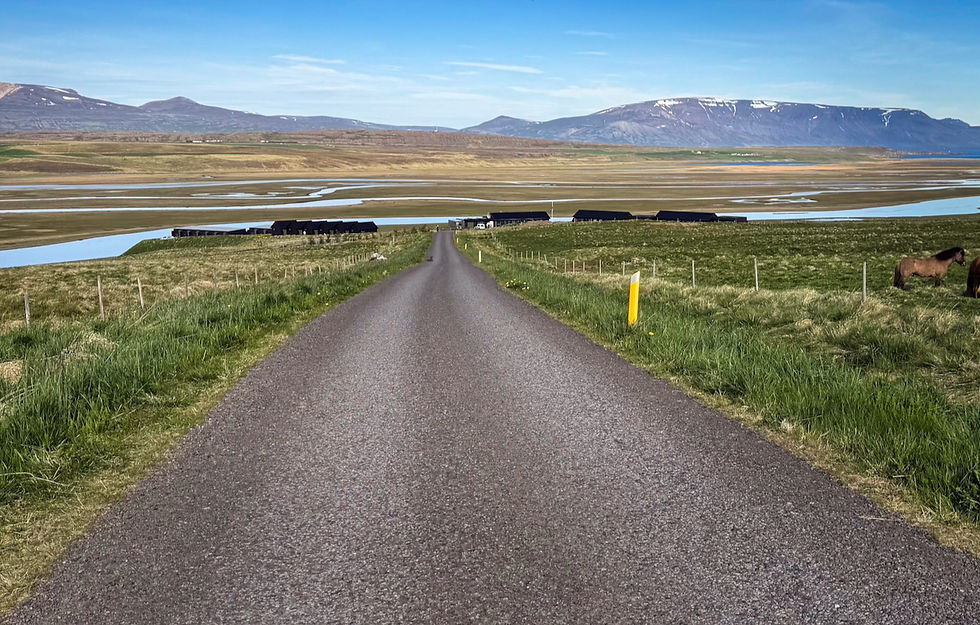
Other than that, though, you can travel at your own pace during the day. Although the itineraries usually go counter-clockwise, we asked to go in a clockwise direction, which they were happy to accommodate.
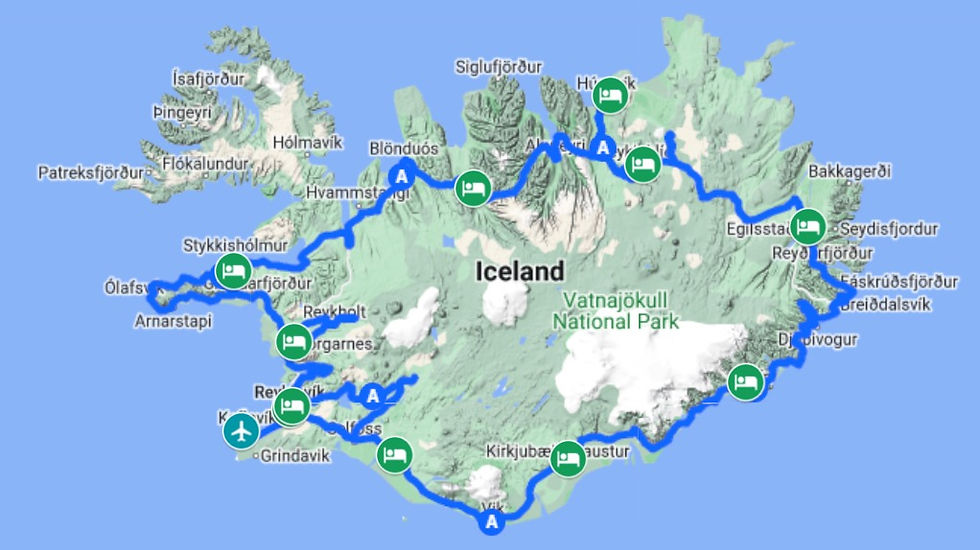
Rather than providing a day-by-day description of our activities, we've decided to organize this blog entry around a few themes - and of course make it mostly pictures rather than words. And we'll start with the things Iceland is most famous for (except the Northern Lights - wrong time of year).
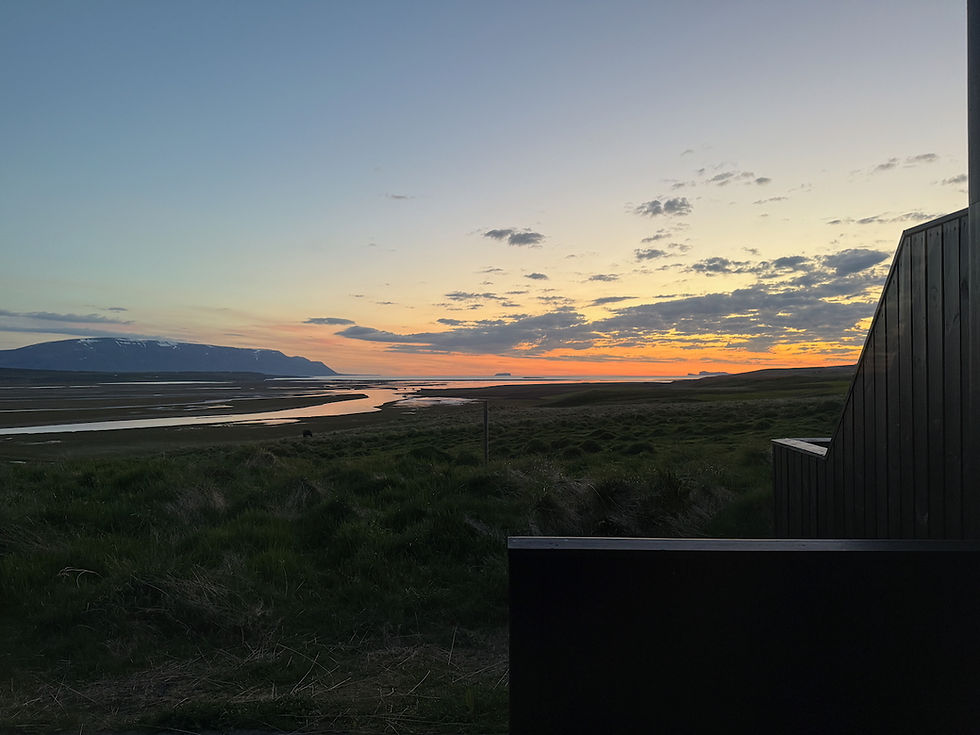
Glaciers
If you look at the maps above, you can see that about one-fourth of Iceland is covered with giant ice sheets and glaciers. Following gravity, the ice looks for opportunities to flow downhill, and multiple glacial tongues can be seen from the Ring Road near to the southern coast of Iceland.
Some of the glaciers empty in lagoons filled with icebergs. The most famous of these, Jokulsarlon (technically, Jökulsárlán, but we'll dispense with the Icelandic spelling nuances for places we name), is located less than a mile from the sea.

Boat tours are offered around the lagoon (we didn't partake). The lagoon has carved an outlet to the ocean, and bergs that have melted small enough flow to the sea.
Depending on the winds and tide, many of these wash back up on to "Diamond Beach." The icebergs glitter like diamonds against the black sand.
Other glaciers and lagoons are nearby.

Waterfalls
Ice sheets melt, and Iceland also gets a fair amount of rain, so amazing waterfalls dot the country. Some fall off high cliffs (especially on the southern coast), while others have carved canyons out of rolling land.



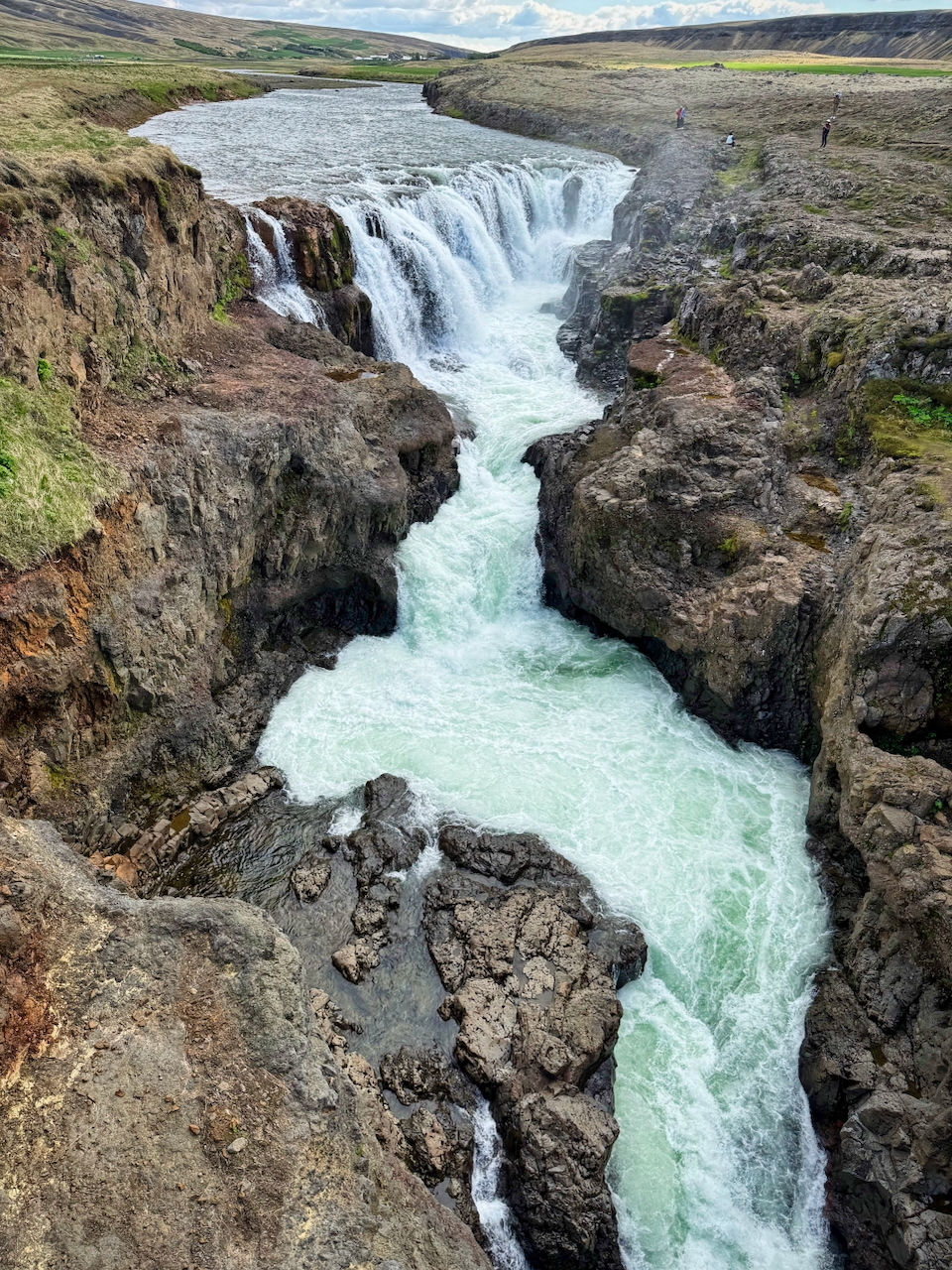
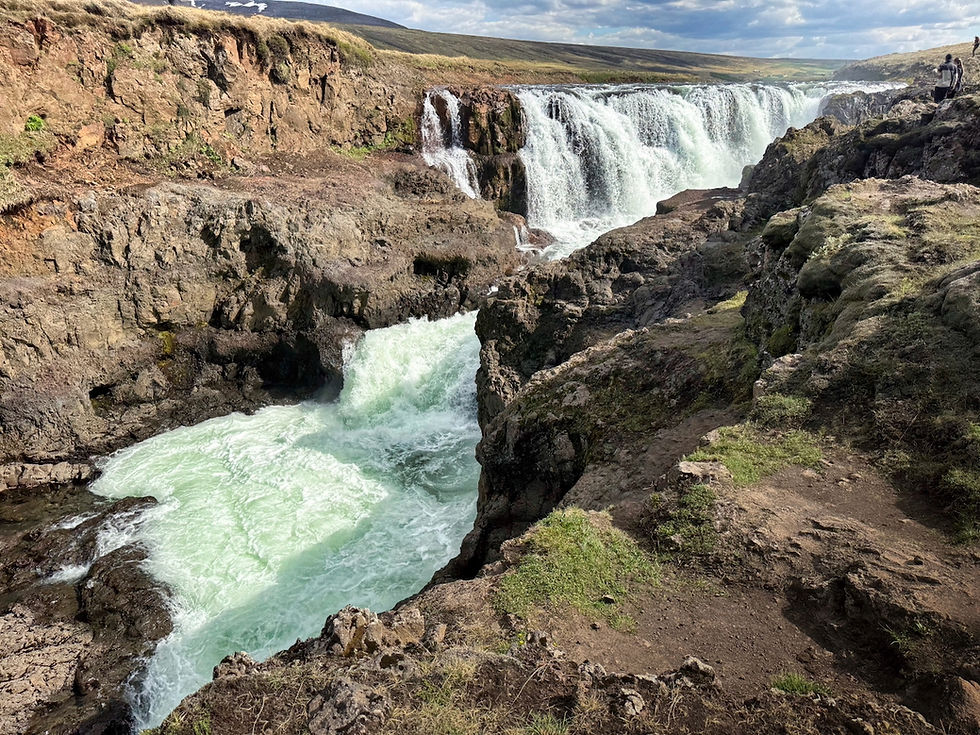
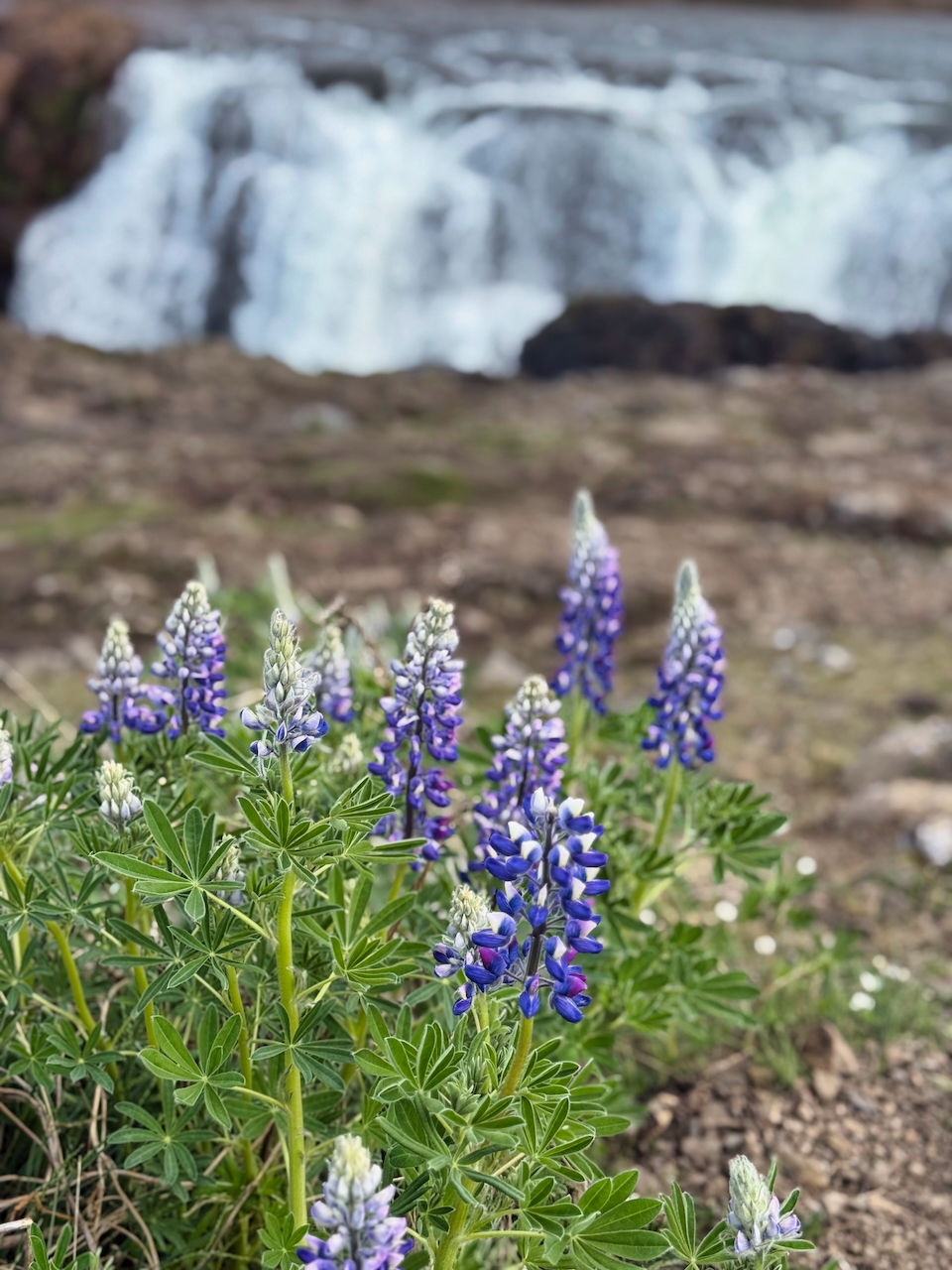

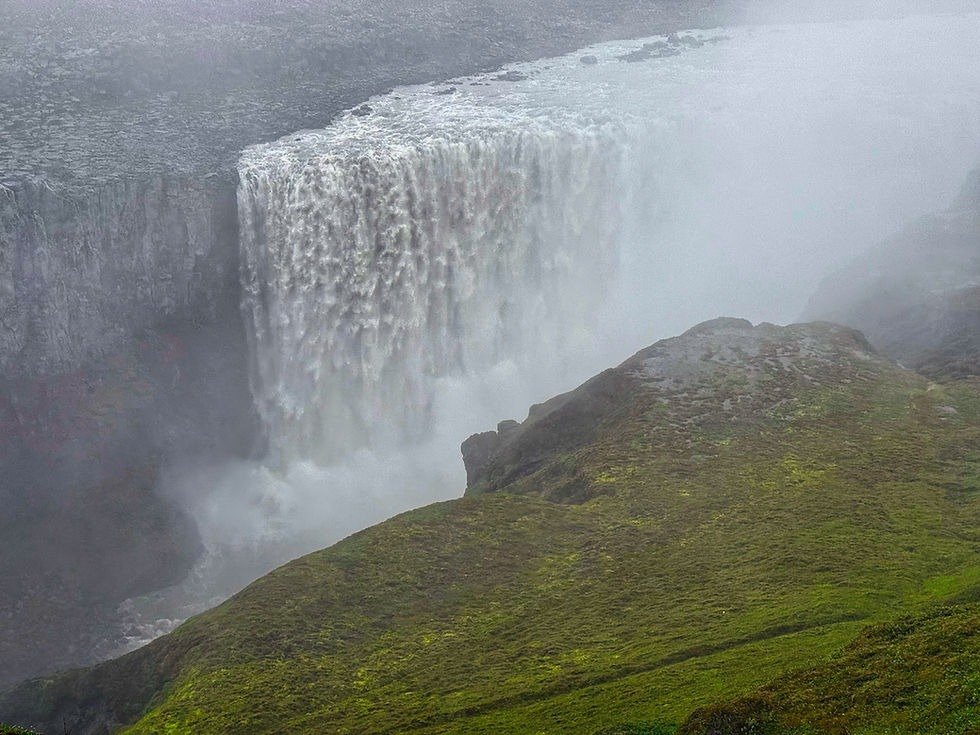
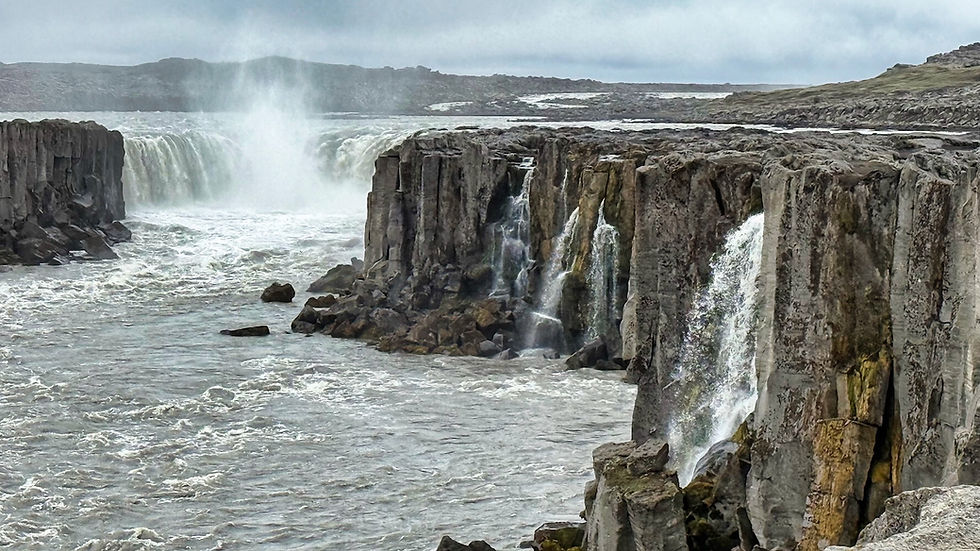
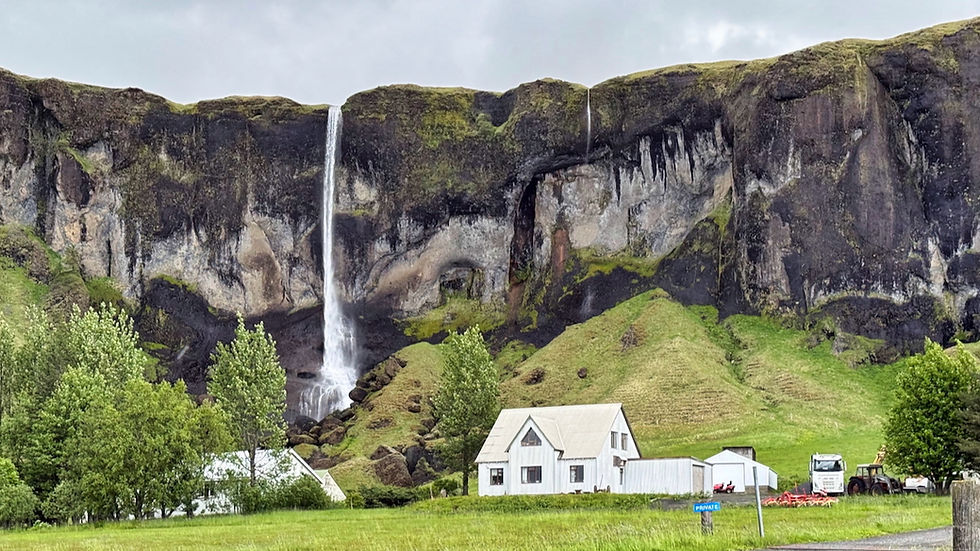
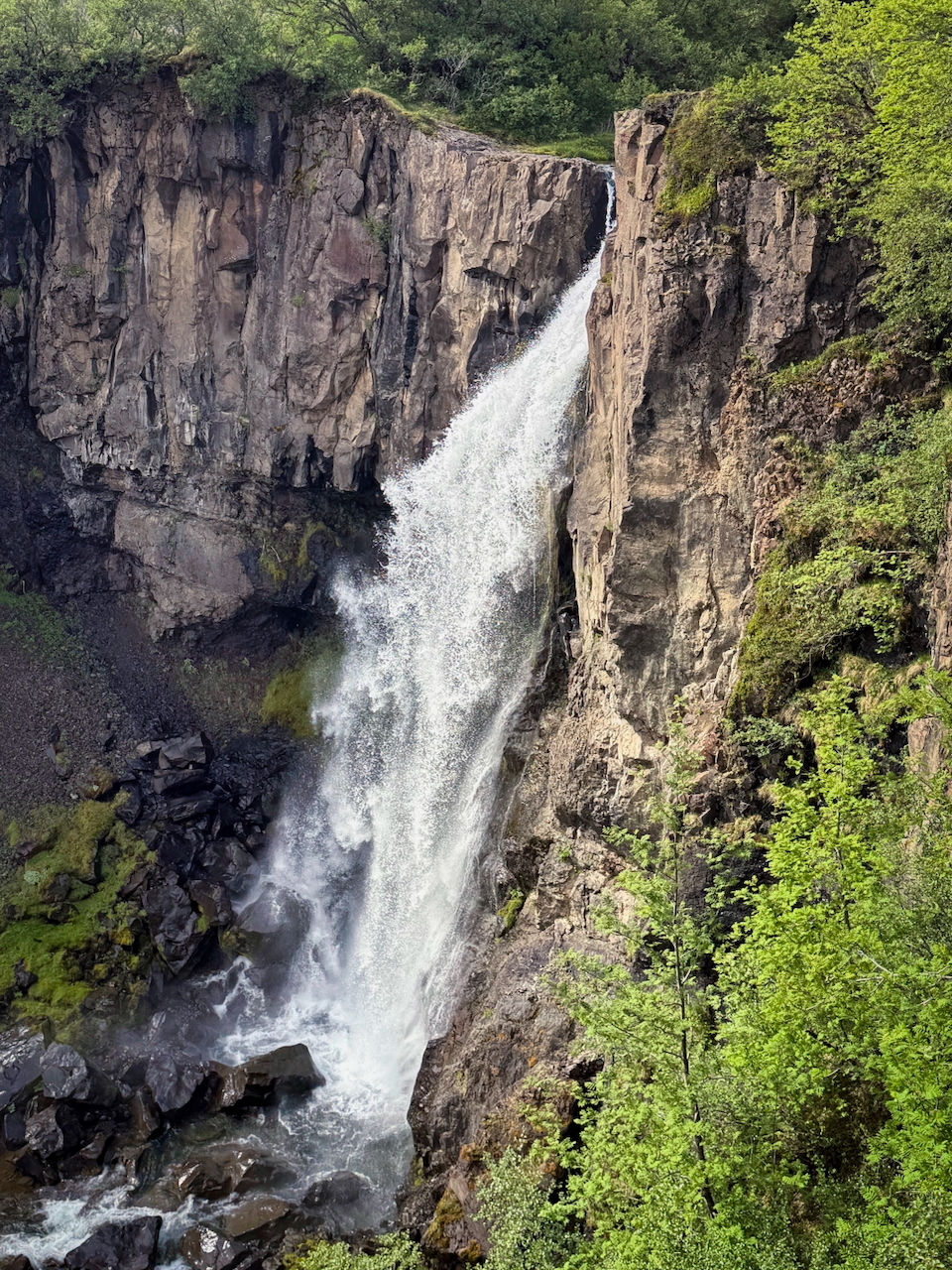
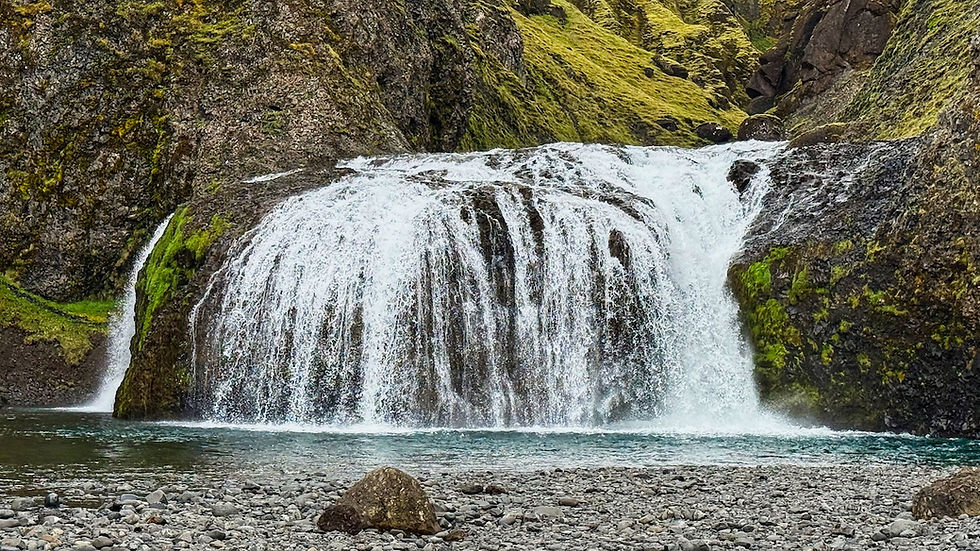
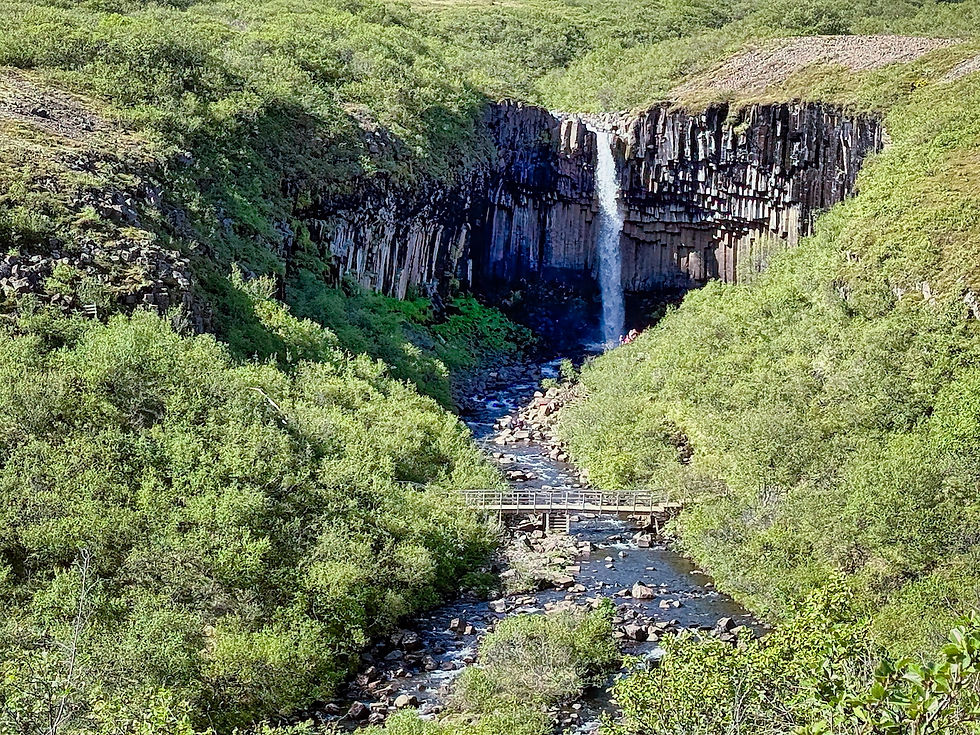
![[FROM 2017] It's easy to see the columns on the sides of Svartifoss.](https://static.wixstatic.com/media/3d0d72_6df79a5533e148c5a6a8947d86259e36~mv2.jpeg/v1/fill/w_980,h_735,al_c,q_85,usm_0.66_1.00_0.01,enc_avif,quality_auto/3d0d72_6df79a5533e148c5a6a8947d86259e36~mv2.jpeg)
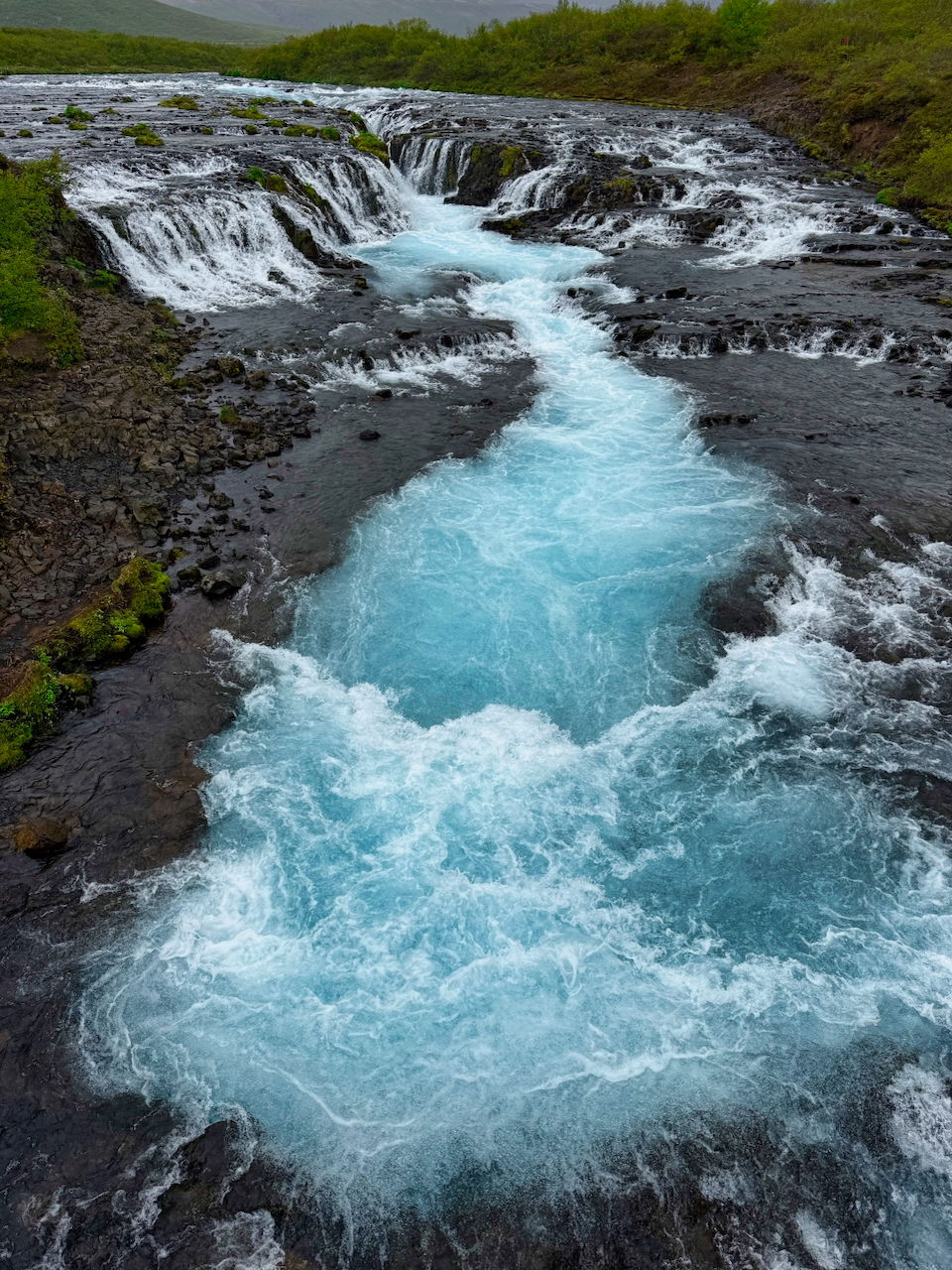
Skogafoss is one of the more popular waterfalls, lying close to the Ring Road and only an hour or so from Reykjavik. You can see a stairway to the right of the waterfall. We'd climbed it in 2017, but decided the descent would be too tough on Doug's knees this close to surgery.
![[FROM 2017] Beautiful cascades lie above the main falls of Skogafoss](https://static.wixstatic.com/media/3d0d72_0ea59059dc5e48b1a305837233030ed2~mv2.jpeg/v1/fill/w_980,h_551,al_c,q_85,usm_0.66_1.00_0.01,enc_avif,quality_auto/3d0d72_0ea59059dc5e48b1a305837233030ed2~mv2.jpeg)
Gullfoss (below) is a stop on Iceland's "Golden Circle" route (a popular day trip from Reykjavik for travelers with only a couple days in-country). You can hike right down to the brink (we didn't this time).
One more very popular falls is Seljalandsfoss, which is the closest to the capital and where you can, in spring and summer, hike behind the falls (it's beautiful, but very wet.)
Volcanos
Iceland is often referred to as a land of fire and ice. It was formed by volcanos over millions of years, and volcanism still shows its face in modern times.
Iceland sits on the boundary between the North American and European tectonic plates, with the rift stretching diagnolly from the southwest to the northeast. The plates spread apart about an inch a year (the country does not get wider overall because those half-inches on each side are eroded away by the sea). The rift is the location of the most active geothermal areas, but geothermal activity and eruptions occur at other locations also. For example, the most recent volcanic eruptions were only a couple of years ago, and occured near the Keflavik airport on the west coast of Iceland - you can see the remnants of it as you drive from the airport into Reykjavik.
We hiked around a couple of small volcanic cones, in different parts of the country, that have filled with lakes.
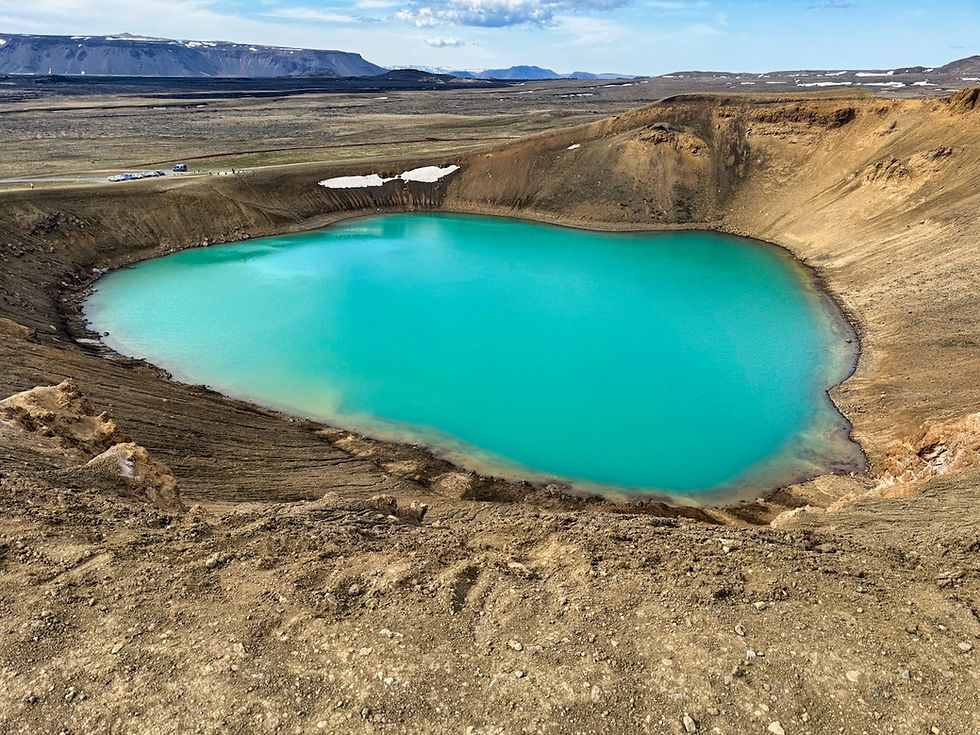

We also drove around the huge Snaefellsjokull volcano, which sits on a peninsula off the west coast. One of its claims to fame is as the spot where explorers started their Journey to the Center of the Earth in Jules Verne's classic tale.
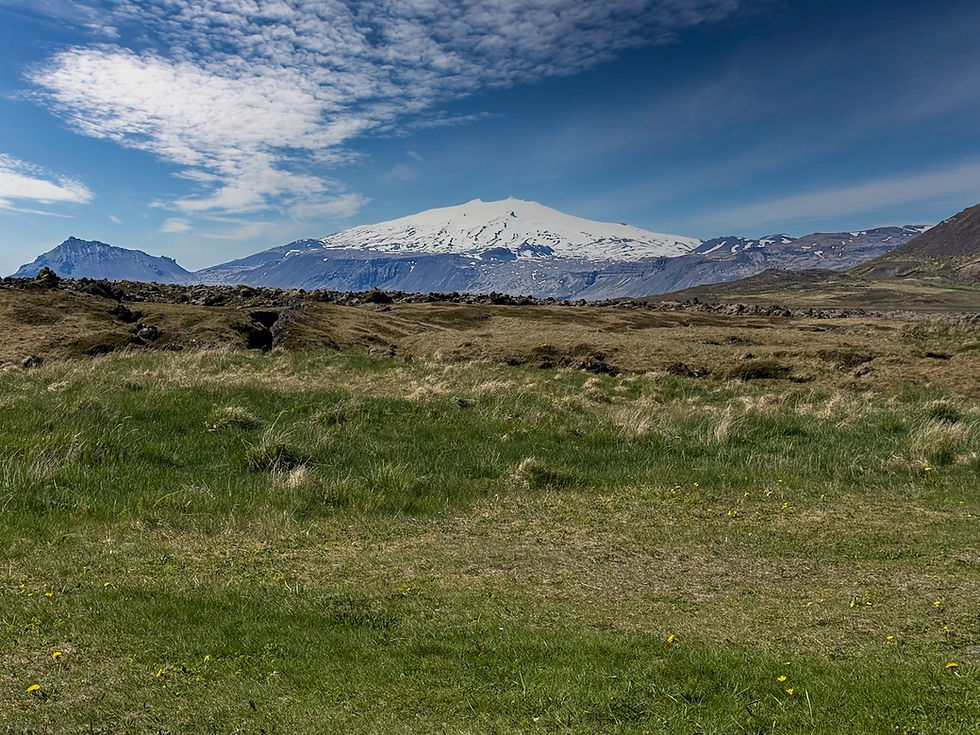
Geothermal Activity
A lot of heat and steam lies just below the ground, and Iceland uses it actively to generate electricity, provide heating for many of the nation's inhabitants, and drive industries looking for cheap power (e.g., aluminum smelting). Geothermal plants dot the country.

There is an area called Geysir that has geysers and hotpools, but frankly it pales compared to Yellowstone so we passed up a visit this time. We did stop at a site in the northeast with a number of fumeroles and boiling mudpots, and a strong sulfur smell in the air.
Other areas that look like volcanos or geothermal features are actually something else. There is an area near Lake Myvatn in the north featuring cones that were actually caused by gas explosions about a thousand years ago.

The other big benefit for Icelandairs is that there are a number of hot springs suitable for bathing, even during the wintertime.
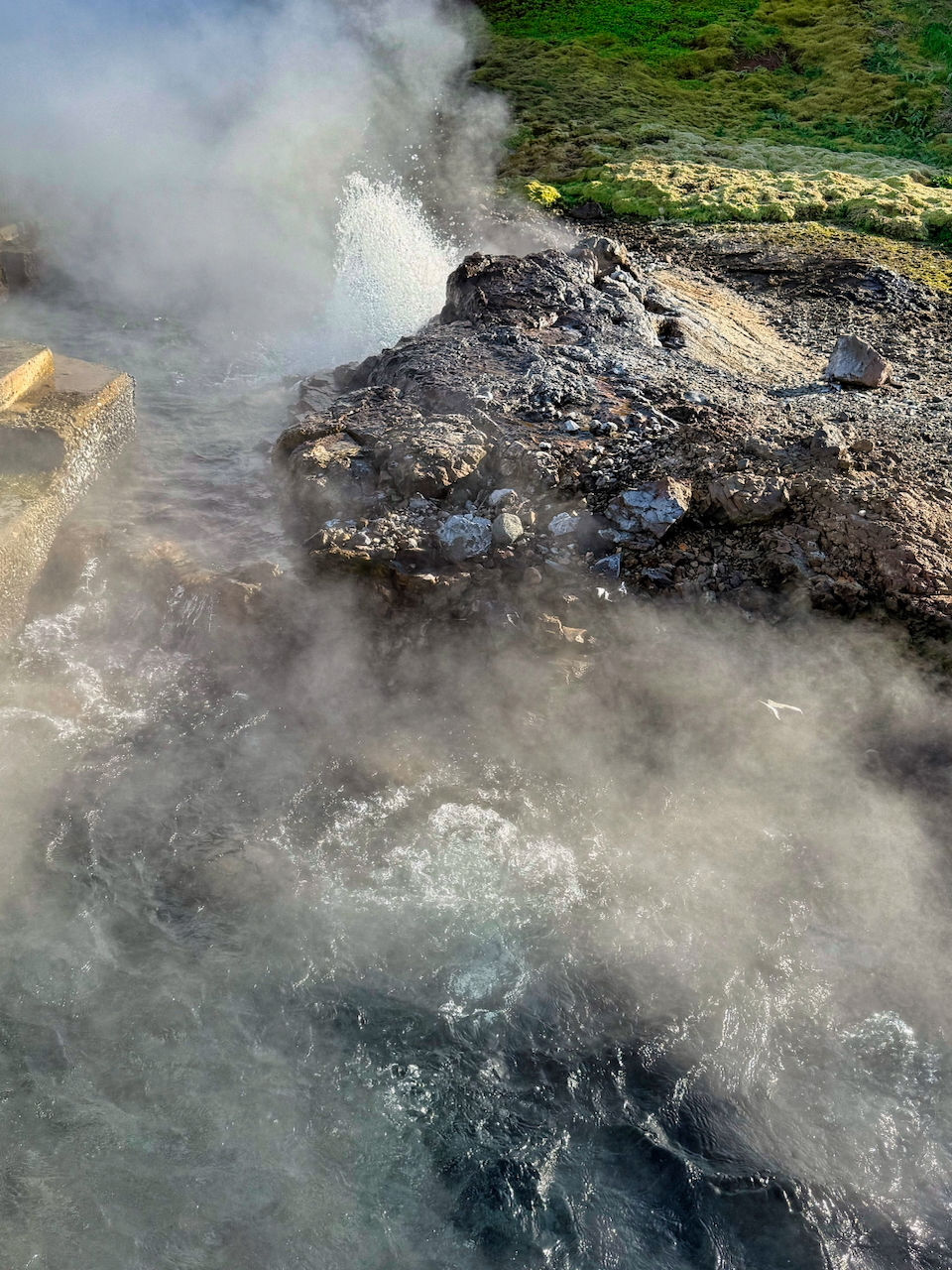
We luxuriated at a couple of hot springs resorts - Krauma in the west, and GeoSea (with heated sea water) in the northeast.
Dramatic Coastlines
Iceland is an island nation, and the Ring Road hews close to the ocean, so we had lots of opportunities to see the coastline. Especially dramatic features include a number of natural arches and amazing black sand beaches.

Caves
While there are no extensive cave systems in Iceland, there are some dramatic caves to visit along the way.


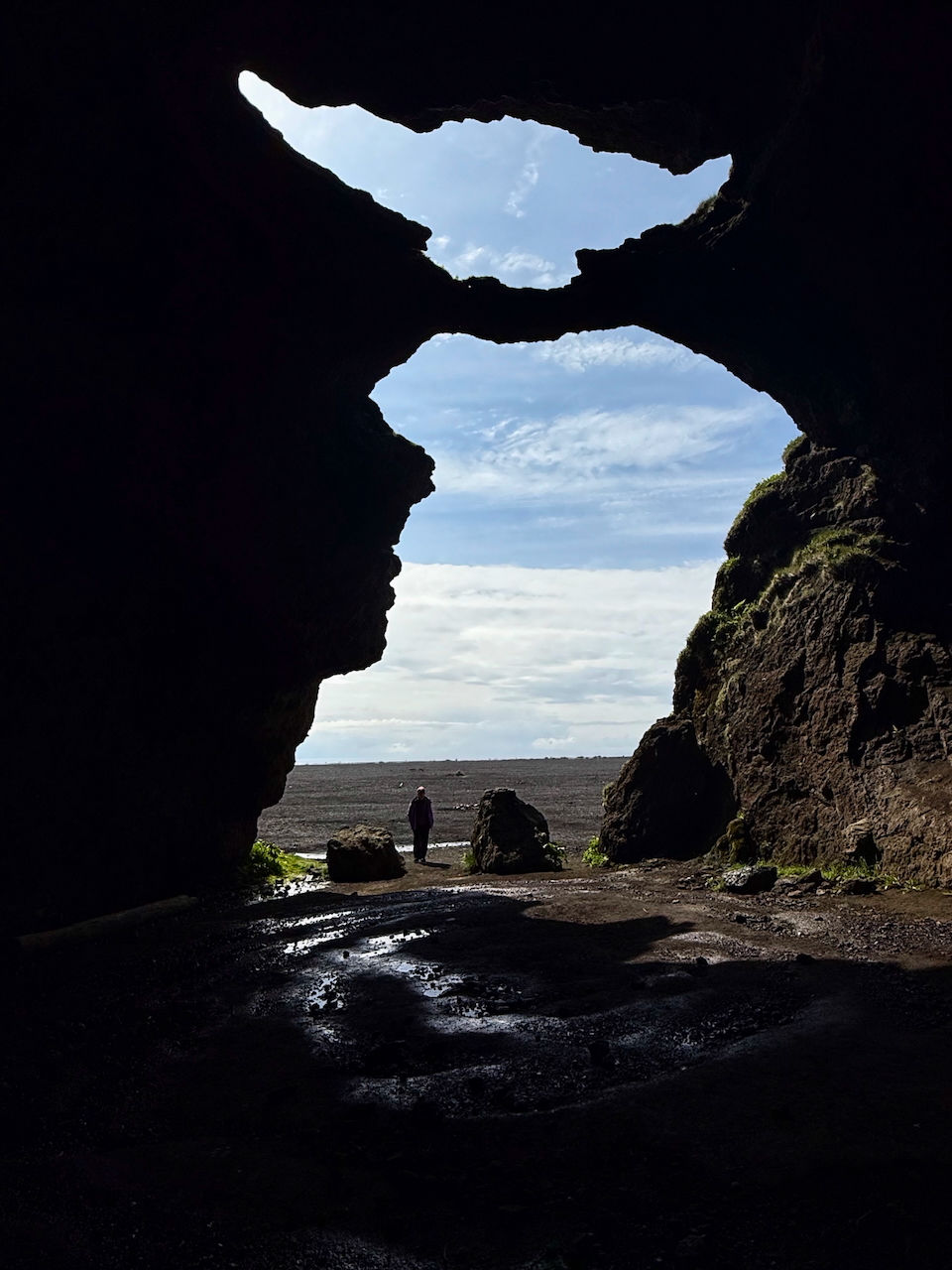
Lava
Lava shows up in many forms in Iceland. Ground down, it forms the black sand beaches and the mountain scree slopes near the coast.


Dimmuborgir in the north is the site of lava frozen in place when it burst up beneath a lake, forming fantastical shapes including an arched cave referred to as The Church.
Under the right cooling and pressure conditions, lava can also fracture into basaltic columns (e.g., see the picture of Svartifoss waterfall above). You see of lot of basalt along the Ring Road, but also in formations such as The Church Floor in southern Iceland, where just the tops of the columns are exposed.

The most common fracturing pattern is into hexagons (six-sides)...
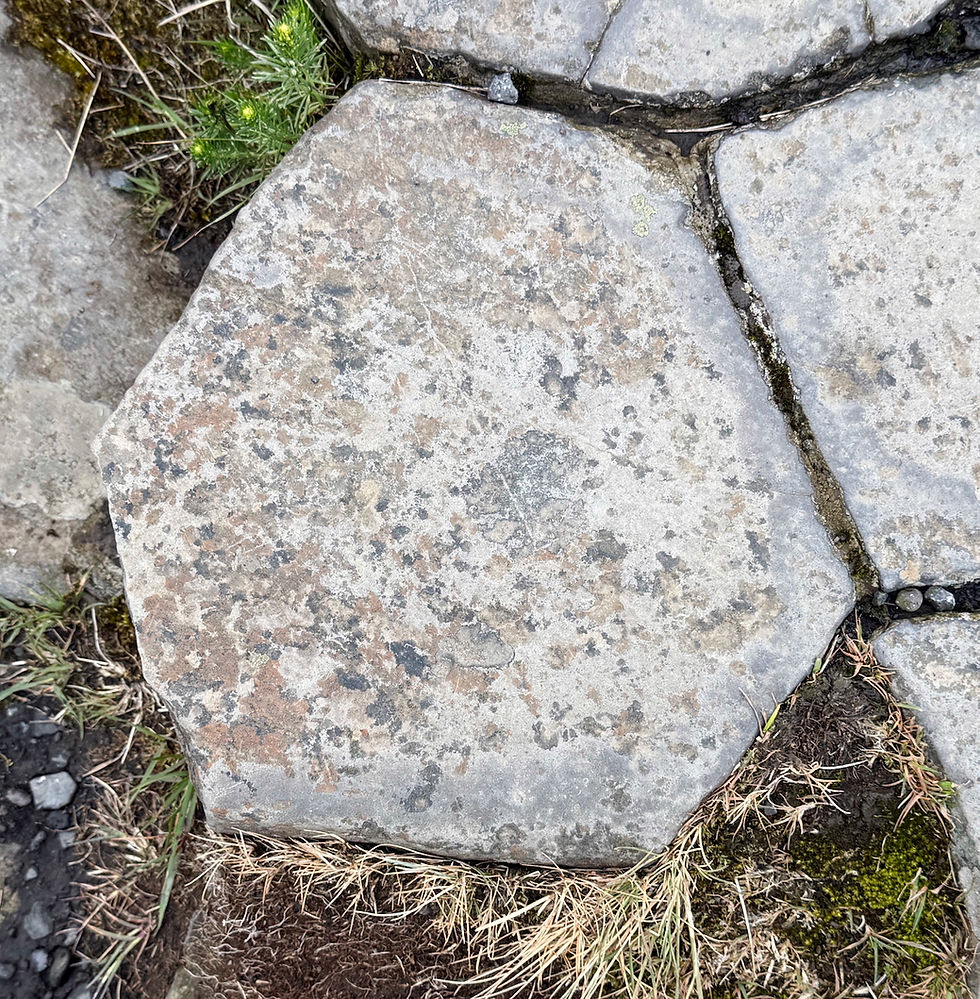
...but we saw columns with four, five, and even up to twelves sides.
Fracturing happens because the tops and bottom of the lava flow cool more quickly than the middle, and frequently the columns are vertical.
However, in the Echo Rocks area of Jukulsargljufur National Park, the columns are sideways or even in jumble of patterns.
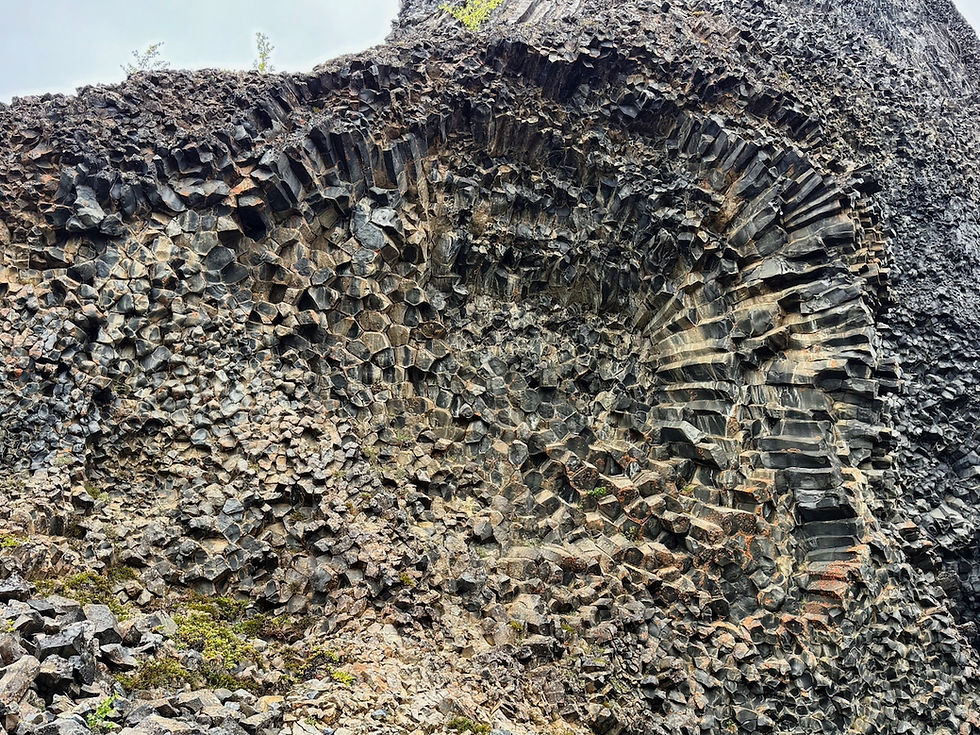
Canyons
The Asbyrgi Canyon area of Jukulsargljufur National Park was carved out 2,000 years ago over a period of just a few days when an ice dam broke, releasing torrents of water that carved out the bedrock. It's similar to, although smaller than, the Grand Coulee in Washington state, formed through similar processes.

On Iceland's southern coast, we also visited the dramatic Fjadrargljufur Canyon, quite a popular hike (you go up the side, not through, and look down into it).
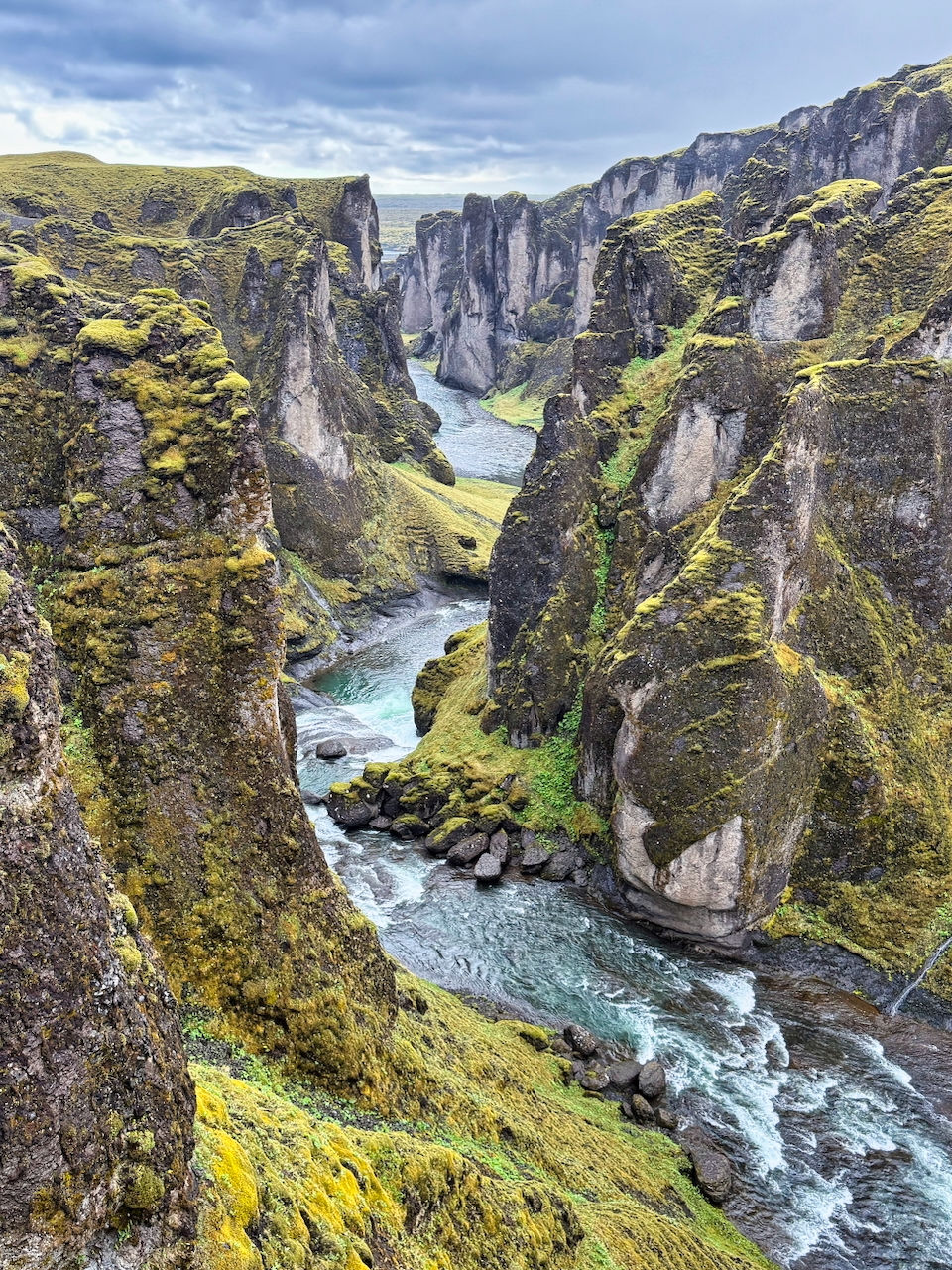
Churches
The most iconic church in Iceland is the Hallgrimskirkja in Reykjavik, which sits at the high point of the city.

Other small churches dot the country and provide many photo opportunities.
This sod covered church, built in the 1600s, is the oldest remaining church in the country.
Vegetation
When the Vikings first discovered Iceland in AD 861, about 60 percent of the country was forested. A thousand years later, just about all the forests were gone, leaving a country of fields and turf. Based on what we heard, humans and overlogging were the cause.
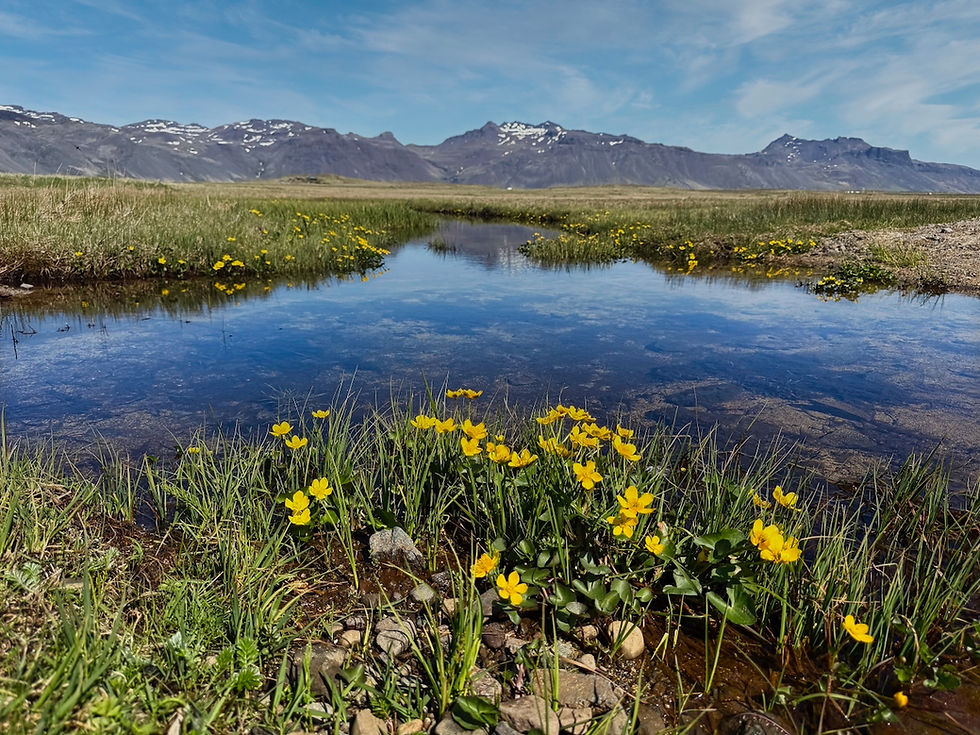
There are environmental efforts to bring forests and trees back to Iceland, but it will be a long process given the short growing season and harsh weather. We did see a number of tree nurseries with pines that were perhaps 6-8 feet tall. In southeast Iceland, there is a forest park that Icelanders from the around the country like to visit because it has the country's oldest and tallest trees. This is what it looks like - a sad commentary, but hopeful for the future.
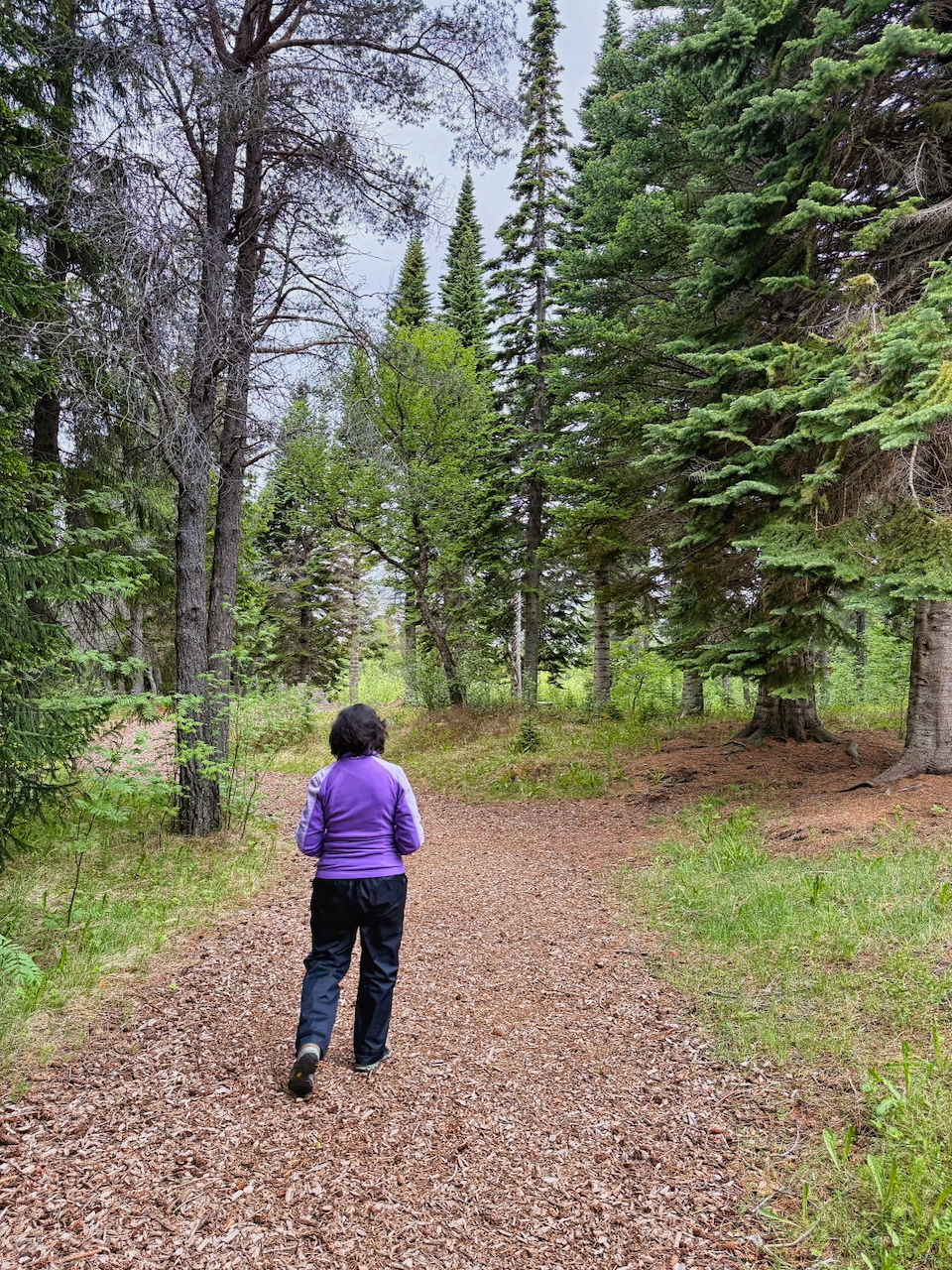
Icelanders are resourceful, so they have learned to make many of the wood products they need (e.g., this shark fishing boat) out of driftwood, of which there is an abundance on the beaches.
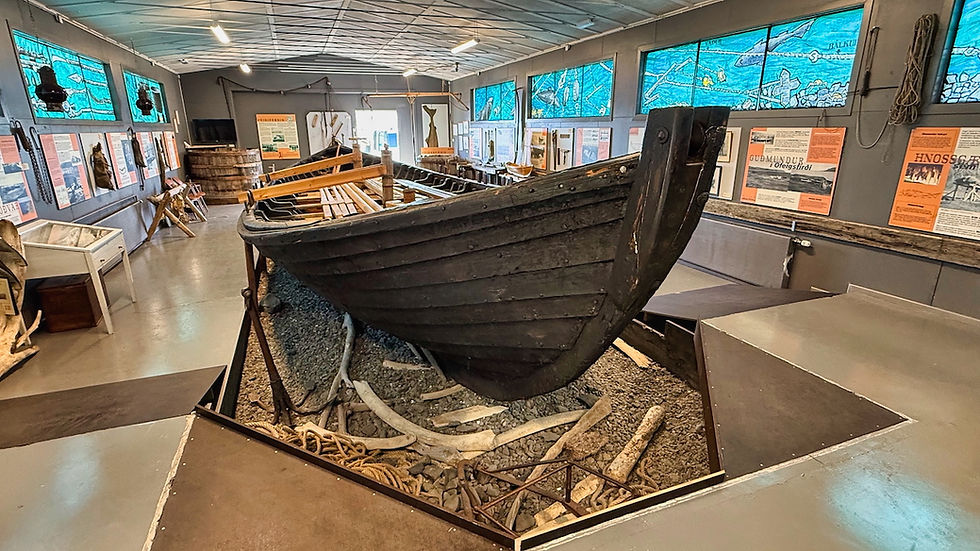
Since it was spring, we saw many beautiful wildflowers, especially lupine, growing along the sides of the road and in the fields, as well as tundra mosses.
The town of Akyureryi in the north had a beatiful botanical garden featuring alpine plants. We were a bit early for the season, but still caught some beautiful wildflowers such as Icelandic poppies.
Most of Iceland's agriculture is based around meat production (sheep, beef), so there are significant grazing lands. In a few places, we saw beautiful Icelandic ponies grazing. They are exported around the world to horse collectors, but some are maintained for domestic consumption - horse steak was on the menu in a number of restaurants (we stuck to seafood and lamb).

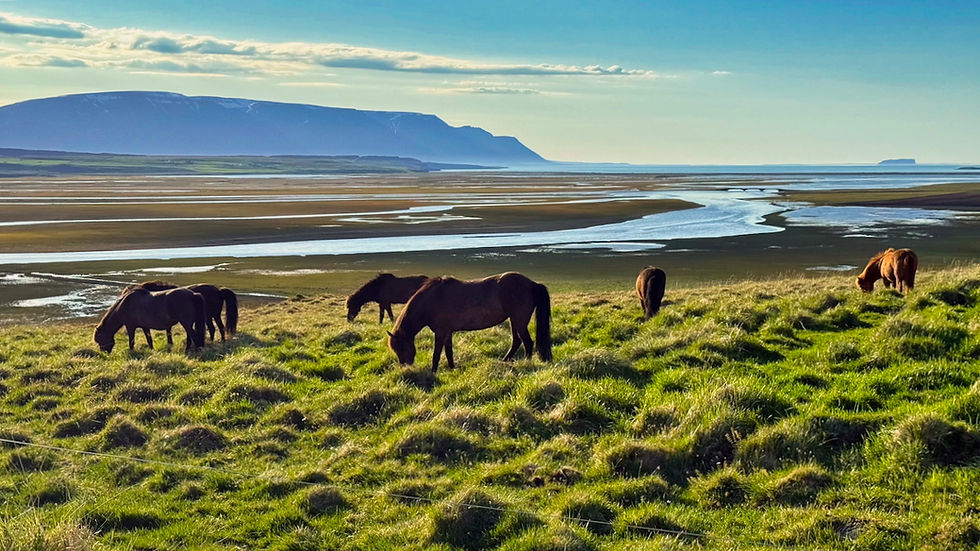
On our last full day in Iceland, we stopped for lunch at the Fridheimar tomato farm and restaurant as we drove the Golden Circle. Usingt vertical growing, the farm's eight greenhouses tap geothermal heating and electricity to grow tomatoes year-round, and produce 35 percent of the country's supply. Lunch was delicious - literally fresh off the vine - including tomato soup and caprese salad.
Museums
Iceland promotes its layover status to people traveling to Europe. You can fly through Reykjavik and stay for up to a week. There are many tourist attractions (e.g., The Lava Show, The Blue Lagoon) that cater to these crowds who don't have time to see the country in depth like we did. Before we left Reykjavik to start our tour, we visited one of these places, the Perlan Museum, which had been built since our first visit.
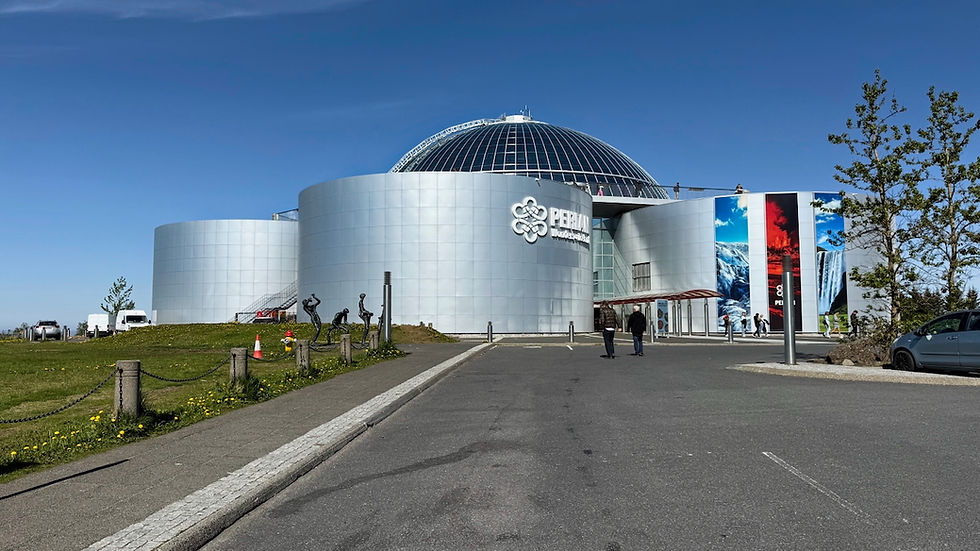
They had some interesting exhibits on geology, birdlife...
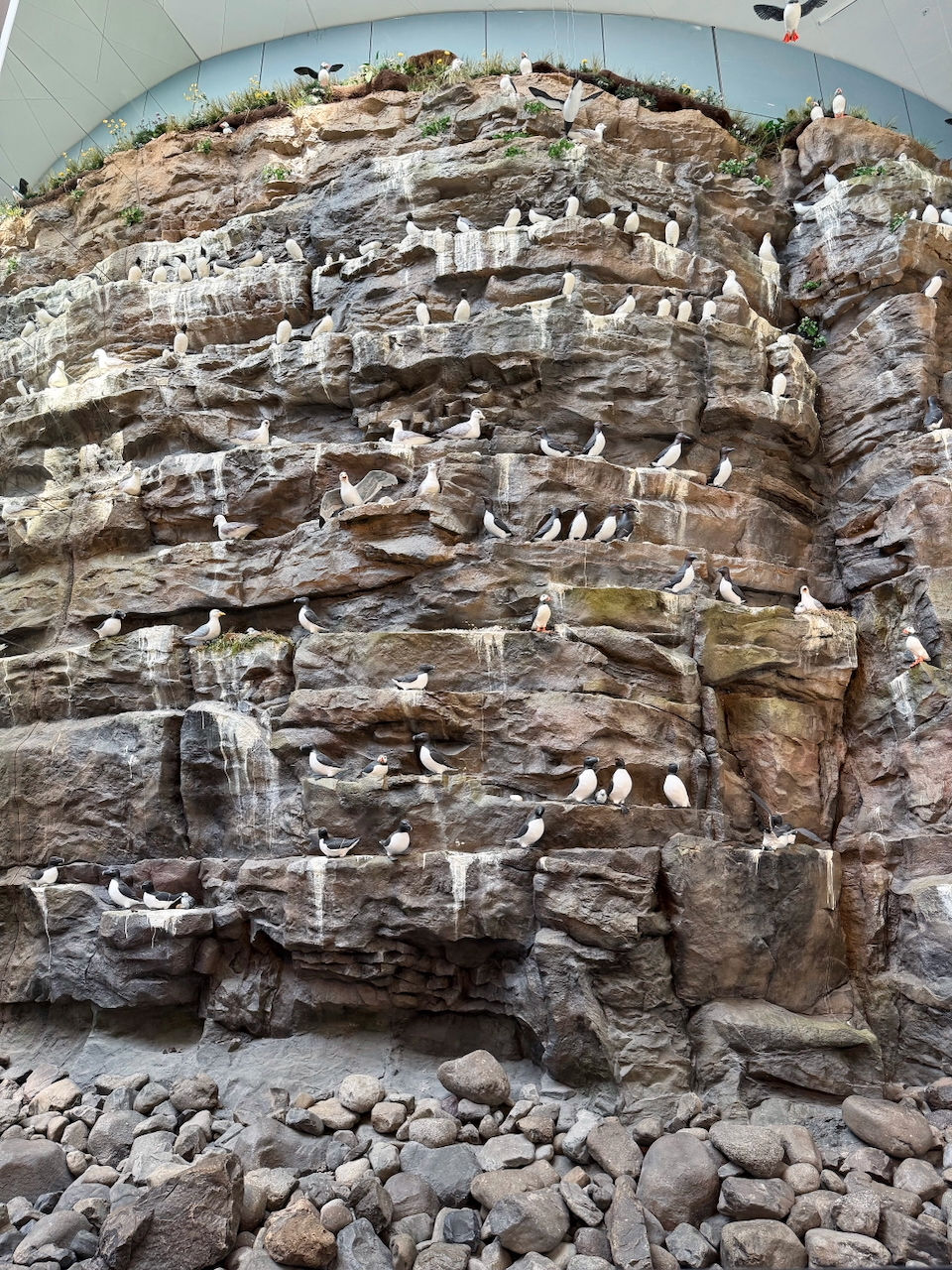
...a chance to walk through a glacial ice cave...
...and a planetarium show where you could learn about and experience the aurora.
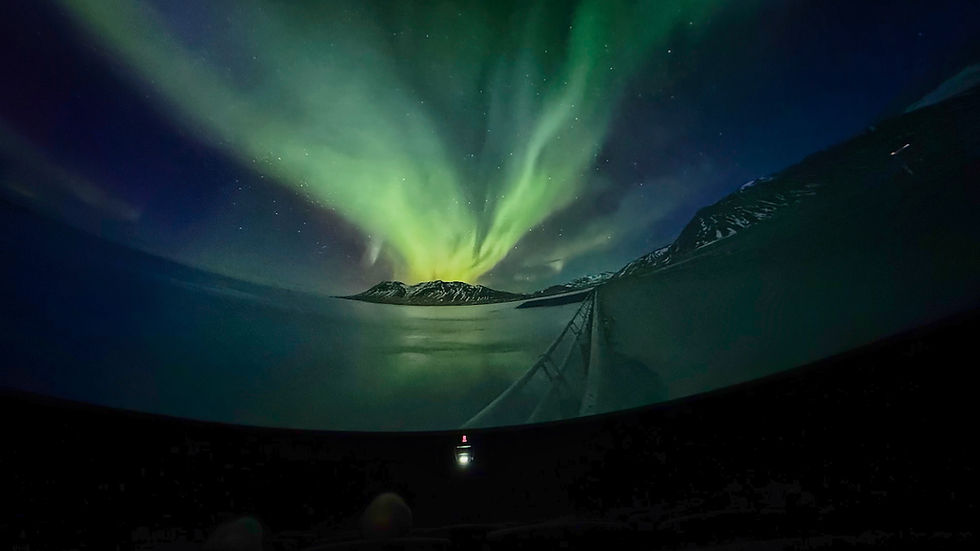
We certainly thought it was worth the price of admission and would recommend it.
We also discovered some quirky but interesting small museums as we traveled the country. We learned that the Icelandic government requires each county to preserve a sample of its historical artifacts, and sometimes these are put into a small museum.

The Bygdasafn museum in Stadur is one such museum. There is an old boarding school next door, and schoolchildren from all over Iceland come to Stadur for one-week field trips to learn more about Icelandic culture and history.
Coming down the winding east coast of Iceland, we stopped at Petra's rock collection, started by a local woman who, for her whole life, tramped up into the hills and collected rocks and minerals of all types. Her family continues to honor her by operating a small museum out of her house and yard.
Overall Impressions of Iceland
We always think the first visit to a country can stand out as the most spectacular in your mind, and that was true for us of Iceland. Nevertheless, we very much enjoyed our visit back and the chance to see the many different geographies of this beautiful country. If you get a chance to go, consider driving the Ring Road for an immersive experience.
It's a country that's cheap to get to (especially layover flights) but expensive to visit (food and hotels) because so much needs to be brought there from outside. The economy is totally tap-based - credit card, phone, Apple watch - we never used any cash the entire time (actually, that was true for all our time in Scandinavia).
Just about everyone in Iceland speaks English. Many of the people we met working in shops, hotels, and restaurants were from other, mostly European countries, although we certainly met native Icelanders as well. People were super friendly.
In contrast to Norway and Denmark, where we met relatively few Americans, Iceland was full of American tourists. Not sure why there was such a difference.
Final Thoughts on Scandinavia
This was one of our best trips ever. Beautiful, breathtaking scenery, and friendly people. This spring shoulder season was, we thought, the best time to go, as we could experience both spring and winter in a single visit, and we did not have to deal with crowds.
If you want our opinion: GO!!! Experience it for yourself. More expensive than some places, but totally worth the cost.
Closing Thoughts
We took on this trip as a way to celebrate Jeannette's successful recovery from shoulder-replacement surgery. Doug's knee-replacement surgery was scheduled 10 days after our return, so we squeezed the trip in between joints, as it were. Doug's was experiencing knee pain primarily going down hill (especially stairs), so we were able to keep walking and hiking between 15,000 and 25,000 steps per day, assisted by hiking poles on the downhills.
Our travel philosophy has been, and continues to be, "as long as we have the health and energy, we're going to go for it." We'd much rather look back 10 years from now, and say "Gosh, I can't believe it did that" rather than "Gee, I wish I'd done that."
After a summer of physical therapy, we'll be dusting off the Ciaowagen and headed out for some RV time.
Please stay tuned....







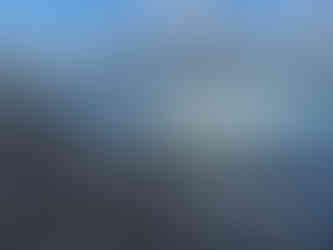
































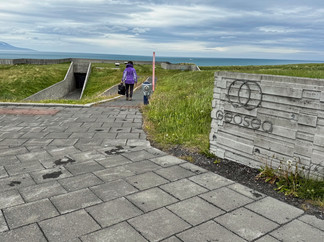
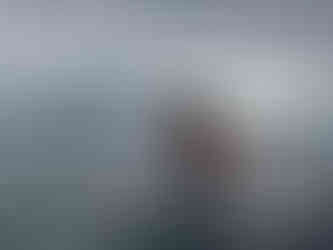


















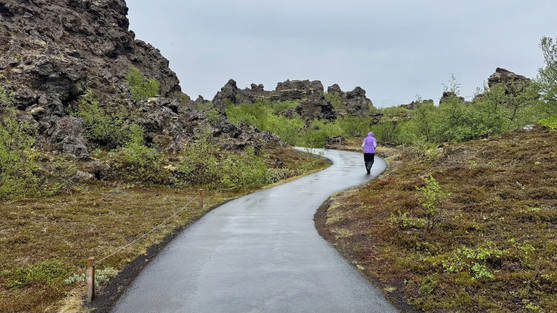

















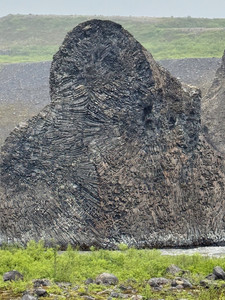































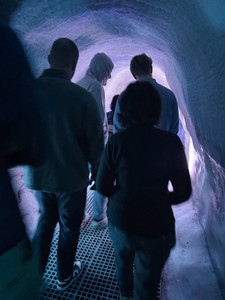








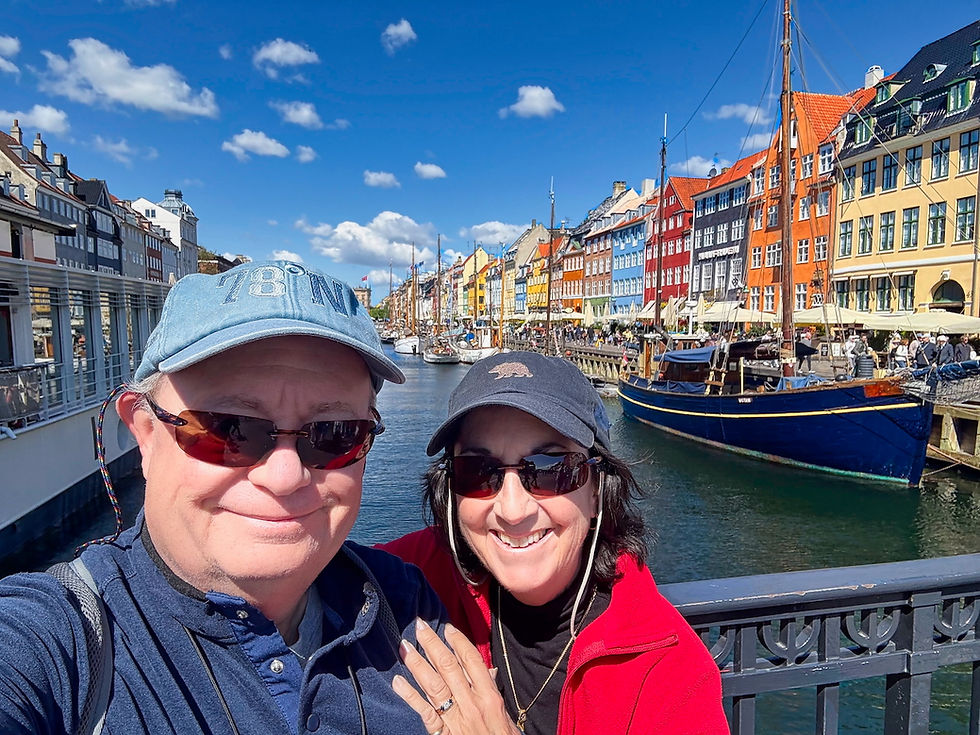


Comments